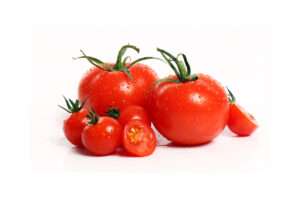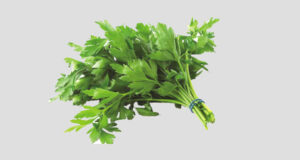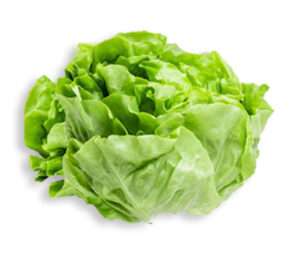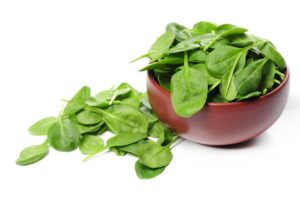Everything about Lettuce Leaves

Romaine lettuce is a strong salad vegetable that is sturdy, crunchy, and full of nutrients. Romaine lettuce, also called cos lettuce, is prized for its nutritional value and tasty, yet neutral flavor.
It’s also high in vitamins and minerals and lettuce calories, sugar, and carbs.
Nutrients lettuce
Romaine lettuce is a dieter’s dream, with only 8 calories and 1 to 2 grams of carbs.
Despite its low fiber content, lettuce is high in minerals like calcium, phosphate, magnesium, and potassium. By nature, this has a minimal salt concentration. Besides that, romaine lettuce has a lot of vitamin C, K, and folate. It’s high in beta carotene, which is something the body turns into vitamin A.
The nutrients in lettuce romaine have several lettuce benefits:
- Vitamin C supports the immune response, is full of antioxidants, and aids in the maintenance of strong bones and teeth.
- Calcium is required for bone formation and maintenance, as well as nerve and muscle function, and blood coagulation.
- Blood clotting requires vitamin K as well. It works in tandem with calcium to reduce osteoporosis-related bone mass loss and fractures.
- Calcium and phosphorus work together to generate strong bones and teeth.
- Magnesium aids the action of enzymes and relaxes the muscles of the body. It helps to create tissue by interacting with calcium.
Romaine lettuce varieties
Lettuce comes in a variety of flavors, textures, and colors, ranging from buttered and mild to nutty and also somewhat bitter; and colors ranging from light to dark green and burgundy.
Crisphead: Let’s start with crisphead lettuce, also recognized as head or heading lettuce, which is a type of L. Sativa.
Igloo: With its softly serrated leaves, another green variety, ‘Igloo,’ matures in only 70 days. It can withstand the heat and thrive even in the hottest months.
Webb’s Fantastic: ‘Webbs Wonderful,’ an heirloom cultivar from England, is heat resistant and produces firm, sweet-tasting heads that are 7-11 inches in diameter. The softly folded outer leaves encircle a pristine, pale green center.
Red romaine lettuce: The daisy family’s red leaf lettuce is a green vegetable. It resembles romaine lettuce except for the red or purple hue on the tips. This vegetable provides various benefits in addition to giving a splash of color to your favorite salad or sandwich.
Romaine lettuce recipes
Salad: Disconnect the triangle-shaped core and throw it away. Make sure the cut side of the half heart is facing down. Cut the lettuce into three-quarters or quarters lengthwise one more. Cut into small bite-size chunks: Chop the lettuce into bite-sized pieces, starting from the leafy end and working your way to the core end, with the cut side down.
Benefits of lettuce leaves
The greatest health advantages of consuming lettuce leaves are listed here. Lettuce is high in vitamins K and A, as well as antioxidants. Let’s see how it can help with sleeplessness, digestion issues, and maintaining a healthy heart. We also go through some of the Lettuce’s adverse effects as well as its history and origin.
Lettuce can help with insomnia.
When lettuce leaves are cut or broken, a white liquid called lactucarium is released, which aids in the treatment of insomnia. This liquid possesses opium’s calming and sleep-inducing characteristics without the negative side effects. If you’re having difficulties sleeping, try eating a few lettuce leaves.
Lettuce is a disease-fighting vegetable.
Lettuce contains antioxidants that fight free radicals in our cells that arise as a result of cellular metabolism. These free radicals are known to cause damage to the surrounding tissues and cells. By transforming healthy cells into malignant cells, they may even cause cancer to develop. Antioxidants function to keep us safe from this.
Lettuce is beneficial to cancer sufferers.
Lettuce leaf extracts can stop leukemia and breast cancer cells from spreading. Lettuce also includes flavonoids, which offer some protection from malignancies of the lungs and mouth. As a result, including lettuce in your diet can aid in the prevention of several cancers.
Lettuce is beneficial to cardiac patients.
Cardiovascular problems can be caused by high levels of harmful cholesterol in the body. Lettuce includes Vitamin C and beta-carotene, which work synergistically to prevent plaque formation on artery walls, which can impede and interrupt blood flow. As a result, lettuce inhibits cholesterol oxidation, protecting our hearts from illness.
Lettuce protects neural cells from damage.
Due to its important involvement in glucose or serum deprivation, lettuce extracts aid to prevent neuron cell death. Neurons are cells in the brain that help to form memories by forming physical connections. As a result, lettuce can help to avoid disorders like Parkinson’s, which are caused by the loss of neuron cells.
FAQs
Lettuce is an evergreen tree in the Family asteraceae that looks like a daisy. It is normally cultivated as a leaf vegetable, although its stem and seeds are also harvested.
To answer your query, Romaine lettuce is the most nutritious. And has more folate, potassium, beta carotene, and lutein than red leaf, green leaf, butterhead, and iceberg lettuce.
Because of its increased nutrient richness and low-calorie content, Romaine lettuce is ideal for weight loss. It can, however, be a delightful and healthy complement to any dinner or eating regimen.
They also include vitamin from type 2 diabetes to tr blood sugar levels. They’re also high in antioxidants, which might help keep your eyes healthy.
It produces kidney stones in small doses. Fortunately, romaine lettuce is green and contains very little of this toxin! Changing up your salads from time to time to include this might be quite healthy.
Lettuce contains a lot of vitamin K, which is good for your bones. There are 7 calories in it.
It has a low salt content by nature. Besides that, romaine leaves has a lot of vitamin C, K, and folate. It’s high in beta carotene, which even the body turns into vitamin A.
Romaine lettuce will remain in the fridge for around 7-10 days if stored properly.
They are high in insoluble fiber and have been shown to help with irritable bowel syndrome symptoms. If you like iceberg lettuce, consider substituting kale, arugula, and spinach in your salad.
Bacteria can easily spread to these goods, and because they’re frequently consumed raw, bacteria aren’t eliminated by cooking.
All you have to do now is carefully separate the foam cube from its joint and put it in a pot or a net pot which will develop to its full size.
Conclusion
Lettuce is a biennial plant that belongs to the Asteraceae family of daisies and is commonly grown as a leaf vegetable. Lettuce is not only a key component of salads, but it’s also utilized in soups, sandwiches, and other dishes.






